Aircraft avionics are powered by a mystical, magical smoke that is contained inside the fancy boxes and wires that make up the complete system in a little airplane. This smoke is very precious to an aviator and should not be released out into the atmosphere under any condition. Once it has escaped, the only way to recapture it is to spend many, many monies soaked in tears. Therefore, it is imperative that when flipping the master switch on for the first time, all efforts to contain this magical smoke are made to avoid crying and empty bank accounts (again).
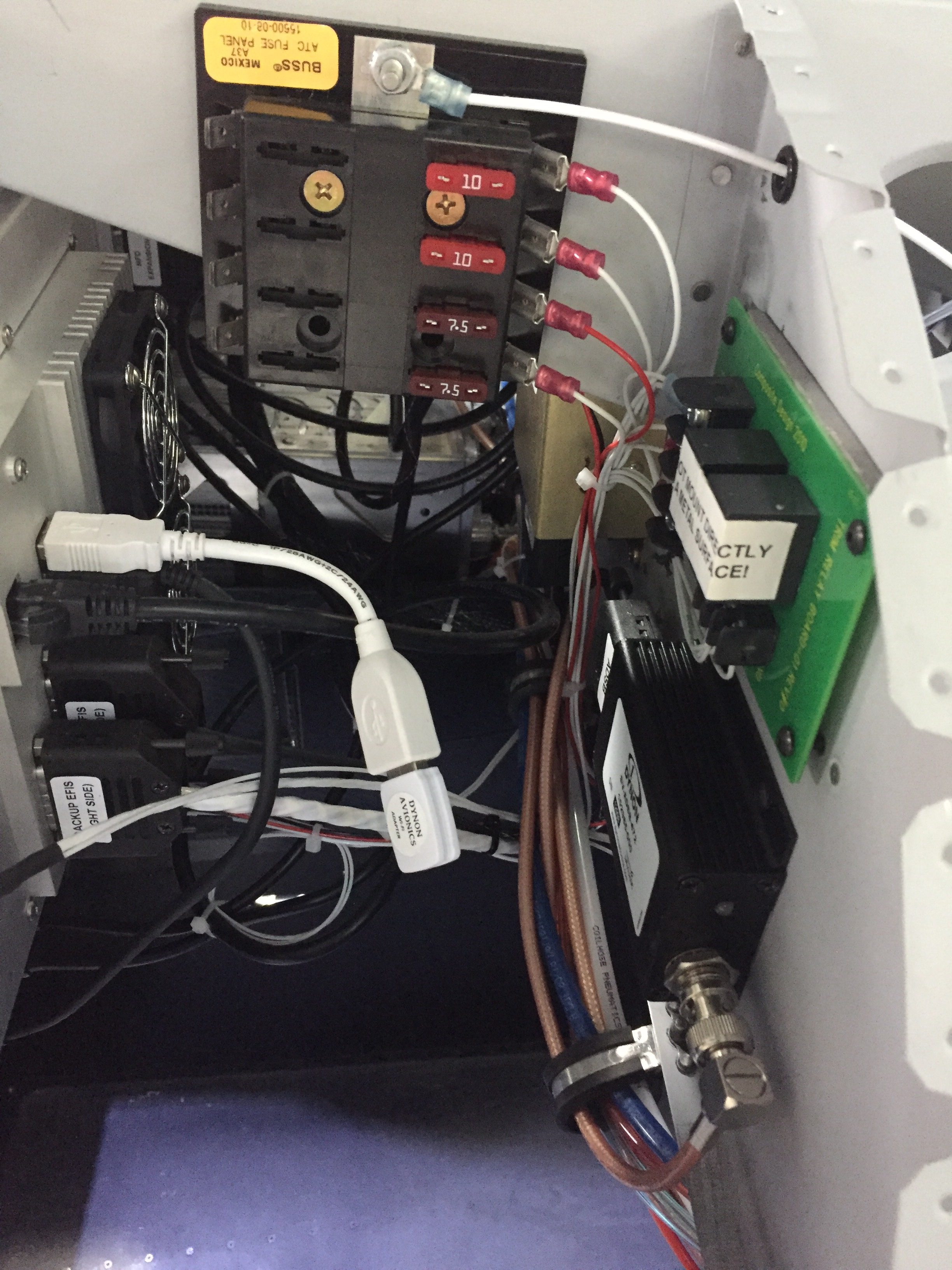
I spent each minute working on the wiring also tracing paths and double checking all of my runs and connections against the wiring schematic, manuals, and common sense. I also dedicated an entire evening to looking everything over, pulling on connectors to ensure good crimps, tidying up the last little stragglers, and ensuring that all un-terminated wires were in that state for a good reason and properly labeled/protected from short circuiting.
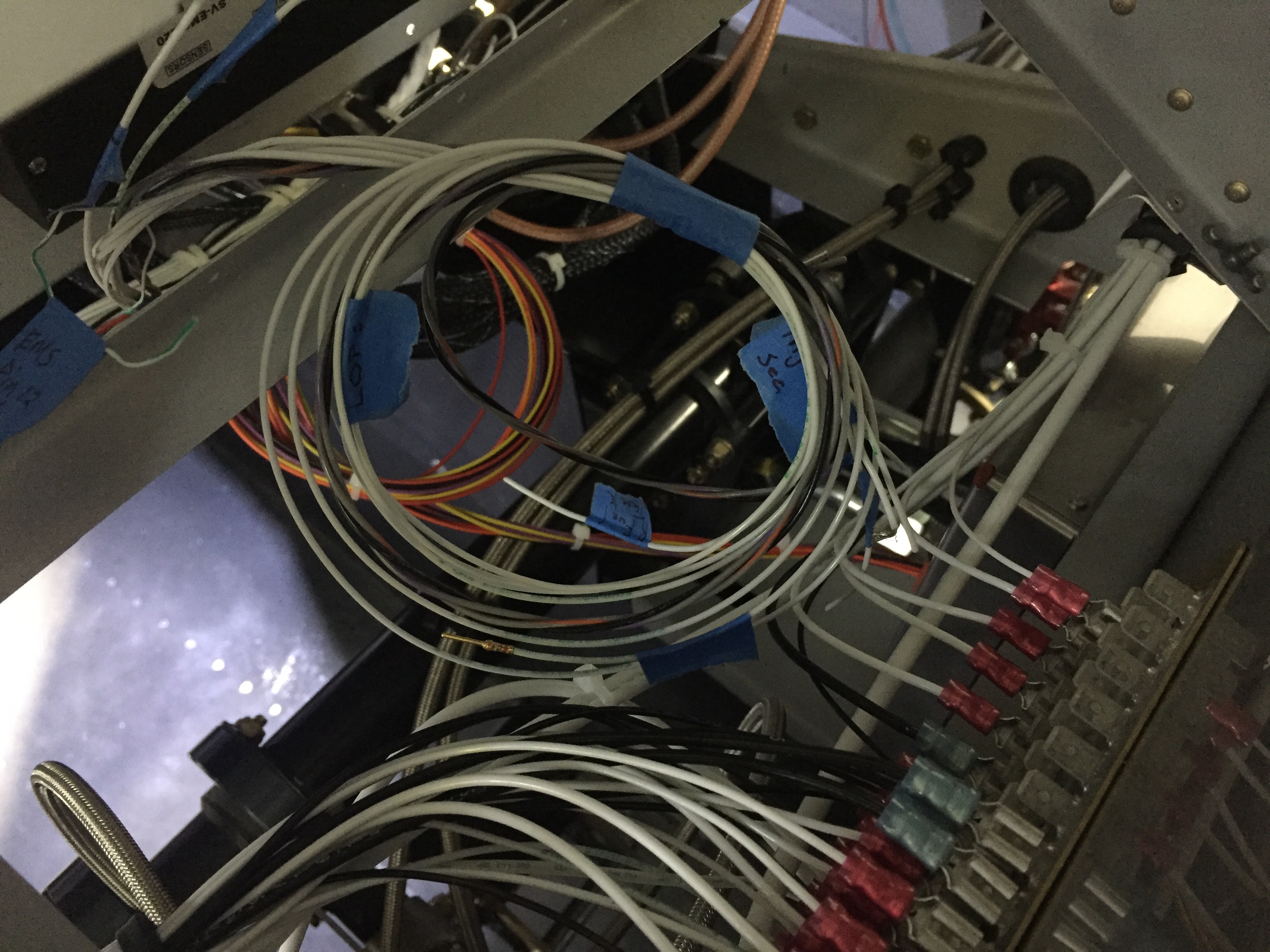
Using the ACM means I can’t just pull all the breakers and turn one on at a time. Unfortunately, I have to power up the whole system then get a screen going to electronically trip each breaker, by then a little late for an emergency. I was confident that the expensive bits including screens and components were all fine, as they were bench tested from AFS. But, there is always a chance that the extra stuff and main power distribution was wrong since I designed and built that. Looking back, I could have disconnected the power wire to the ACM until after I confirmed the main distribution system worked, but I’m jumping ahead.
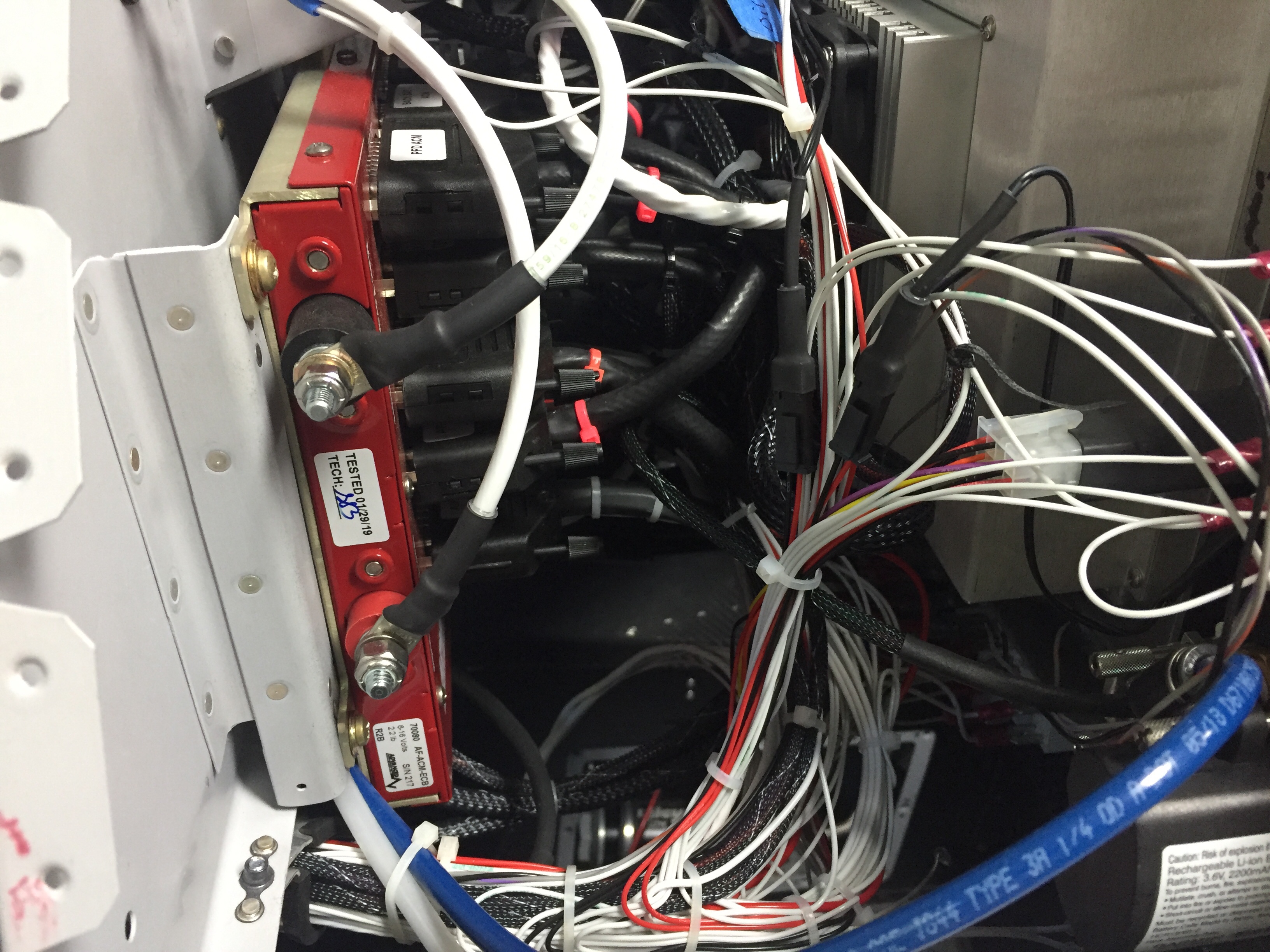
At long last, I ran out of excuses to delay the inevitable and decided tonight was the night to flip the switch and see what I had. The plan was to have Laura help me monitor the plane and keep an eye out for that magic smoke. I walked her through the plan to quickly flip the switch on and off, we talked about what we’d expect to hear and see, and the worst case scenario of a big spark or smoke.
I held my breath and flipped the master switch on and then quickly off, just as briefed. We didn’t hear any notice, no clunk of the contactor, no fans, no screens flickering or anything. Hmmmm. Laura said maybe the flip was too fast. Good point, maybe so. Okay, I’ll try again for 1 second and then turn off for good if nothing powers on. Master switch on……..
PPPPPPpppppppsssssssssssffffffffffftttttttt goes smoke!!!!!!
I heard it before I saw it. None of the counseling says you hear the smoke before you see it and it made the experience that much more traumatic. But as promised, a small, thick stream of the magic floated from the firewall towards the ceiling laughing at me and my meager attempt to contain it. Well shit.
Needless to say, I flipped the switch off as soon as I heard/saw the smoke and quickly went into problem solving mode. First question, what smoked? It was pretty obvious from the melted dripping insulation the jumper wire on the main contactor had rode the lightning. It connects the coil terminal to the hot terminal. But why?

Take a look at the picture below and tell me where Waldo is. The top contactor is the ground power receptacle contactor which is not hooked up at the time. The bottom contactor is the master.
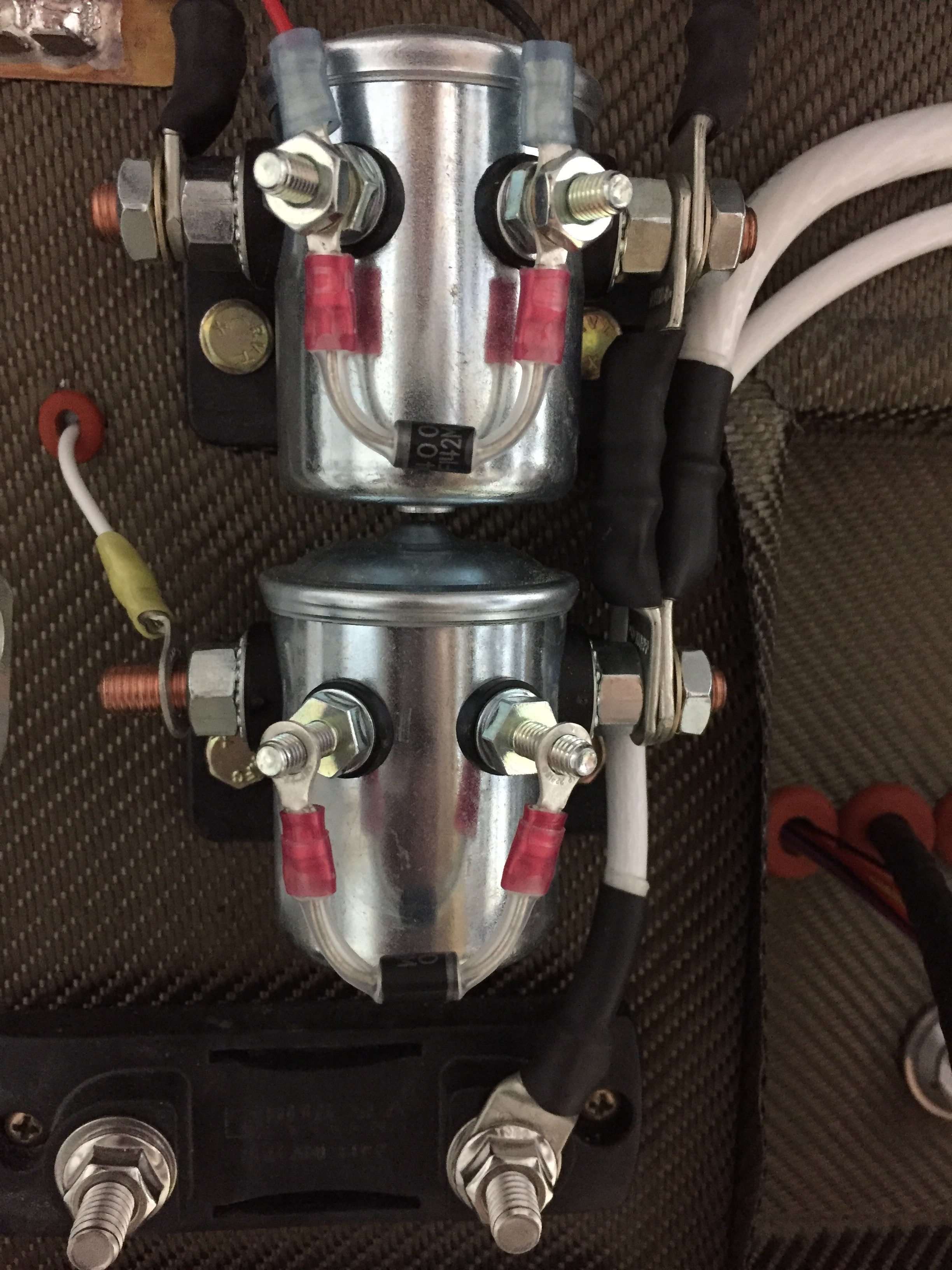
Did you notice the diodes? Well good for you know it all smarty pants. I sure as hell didn’t. And why would I? These came from B&C right out of the box! It turns out the diode on the master contactor was installed by B&C backwards, essentially allowing a short to ground to happen when I turned the master switch on. Power went through the diode the wrong way, through the switch, to ground and fortunately the jumper wire was the thinnest gauge so acted as a fuse and burned. Since the power went the wrong direction, the contactor never closed and no power was delivered to the aircraft.
After confirming with Parish, I canned (cannibalized) the diode from the GPU contactor and installed a new jumper on the master to repeat the power on test. I confirmed the polarity of the diode, checked continuity and voltage on all connections again, and decided to disconnect the ACM from the firewall pass through, limiting the exposure to the expensive bits until the magic smoke is stuffed back in where it belongs.
The third time was the charm, and the reassuring clunk of the contactor resulted in no smoke and positive voltage just where it should be. I connected the ACM wire and saw the screen flicker to life with the AFS logo, what a beautiful sight!!! I flipped the avionics master on to watch all of the other screens power up and soon we were basking in the warm glow of synthetic vision, calibration warnings, annunciations, and confused maps looking for GPS signals.
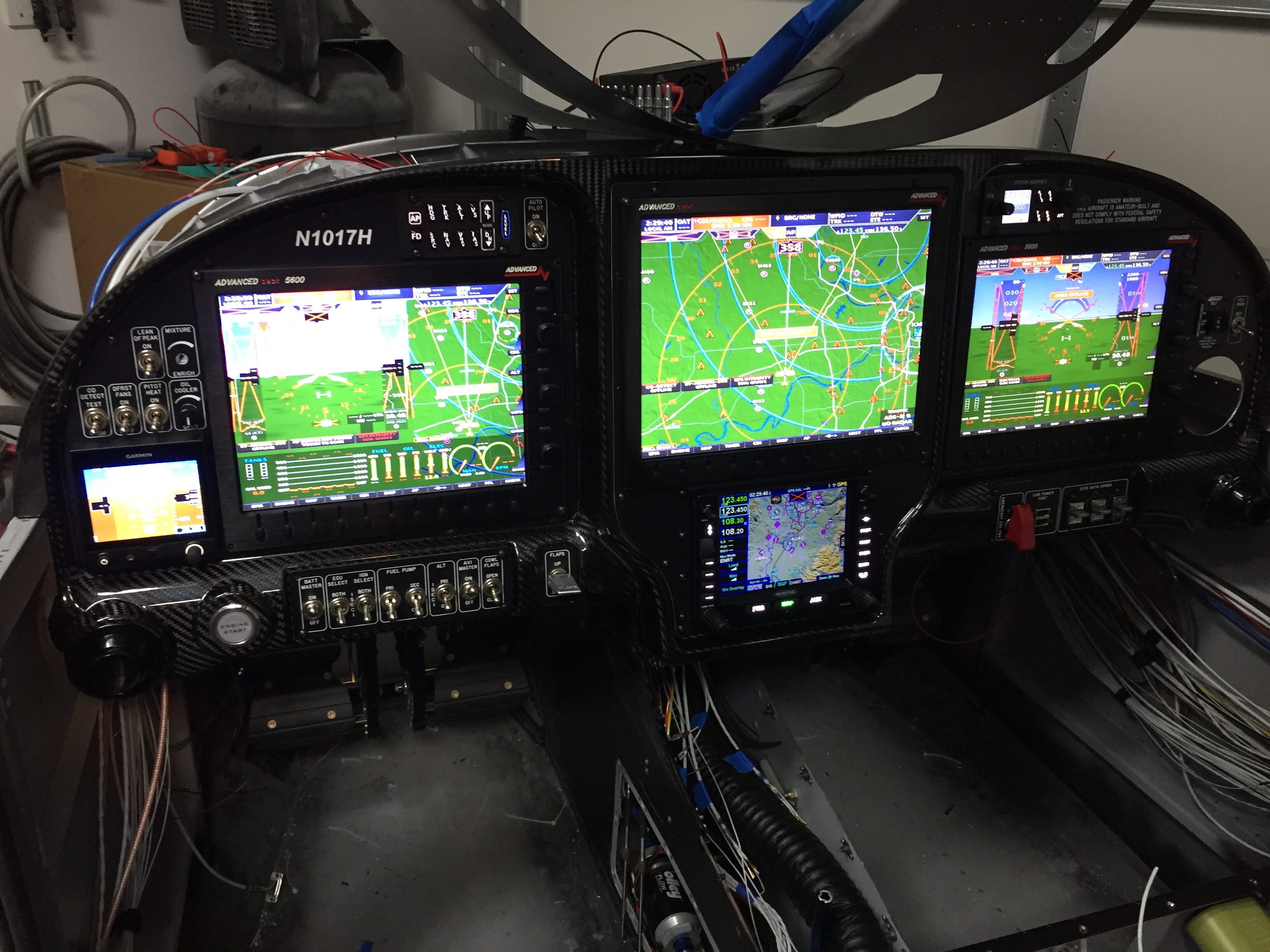
Each circuit was tested with the multi-meter or device if it was connected. Some were just reading voltages, such as lights since the wings aren’t installed yet. My only squwak was the strobe and nav switch wires being reversed, which I took care of by pulling the overhead panel and making the correction.
I cannot describe the joy of seeing all of this powered up and finally a working product. I have spent years dreaming of having a setup like I have and a lot of work and money went into getting to this point. I have a lot to learn, figure out, and get proficient at! I am so excited to get behind these screens and put them to work on all kinds of adventures.
Most of all, I’m lucky that I only let a little bit of magic smoke escape and was miraculously able to stuff it back in where it belongs!
